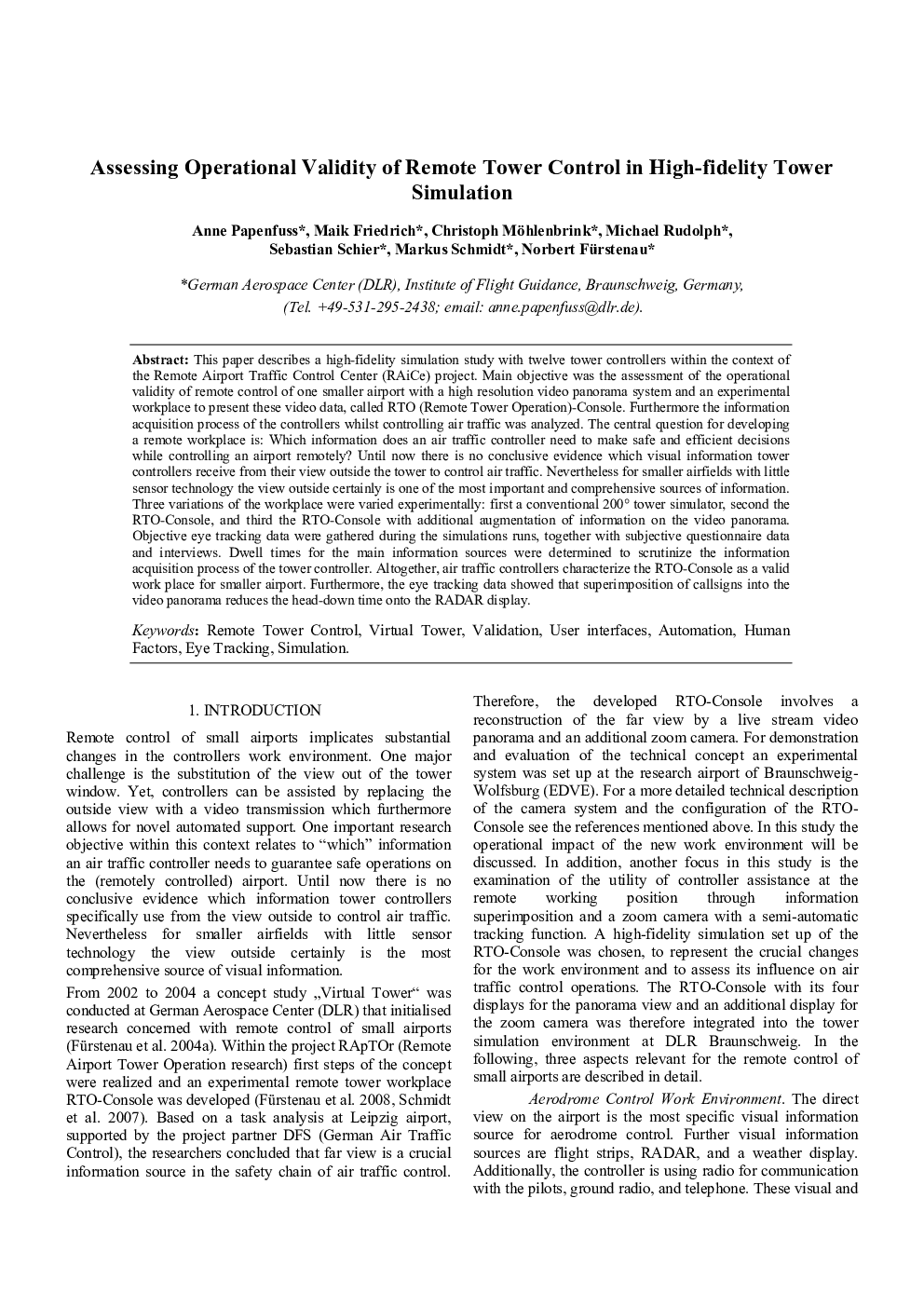| کد مقاله | کد نشریه | سال انتشار | مقاله انگلیسی | نسخه تمام متن |
|---|---|---|---|---|
| 709977 | 892099 | 2010 | 6 صفحه PDF | دانلود رایگان |

This paper describes a high-fidelity simulation study with twelve tower controllers within the context of the Remote Airport Traffic Control Center (RAiCe) project. Main objective was the assessment of the operational validity of remote control of one smaller airport with a high resolution video panorama system and an experimental workplace to present these video data, called RTO (Remote Tower Operation)-Console. Furthermore the information acquisition process of the controllers whilst controlling air traffic was analyzed. The central question for developing a remote workplace is: Which information does an air traffic controller need to make safe and efficient decisions while controlling an airport remotely? Until now there is no conclusive evidence which visual information tower controllers receive from their view outside the tower to control air traffic. Nevertheless for smaller airfields with little sensor technology the view outside certainly is one of the most important and comprehensive sources of information. Three variations of the workplace were varied experimentally: first a conventional 200° tower simulator, second the RTO-Console, and third the RTO-Console with additional augmentation of information on the video panorama. Objective eye tracking data were gathered during the simulations runs, together with subjective questionnaire data and interviews. Dwell times for the main information sources were determined to scrutinize the information acquisition process of the tower controller. Altogether, air traffic controllers characterize the RTO-Console as a valid work place for smaller airport. Furthermore, the eye tracking data showed that superimposition of callsigns into the video panorama reduces the head-down time onto the RADAR display.
Journal: IFAC Proceedings Volumes - Volume 43, Issue 13, 2010, Pages 117-122